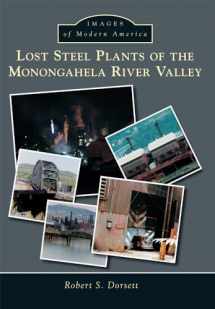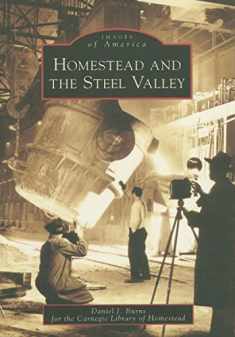
Lost Steel Plants of the Monongahela River Valley (Images of Modern America)
ISBN-13:
9781467134668
ISBN-10:
146713466X
Edition:
Illustrated
Author:
Robert S. Dorsett
Publication date:
2015
Publisher:
Arcadia Publishing
Format:
Paperback
96 pages
Category:
Travel
,
Photography & Video
,
Industrial Relations
,
Industries
,
Manufacturing
,
State & Local
,
United States History
FREE US shipping
Book details
ISBN-13:
9781467134668
ISBN-10:
146713466X
Edition:
Illustrated
Author:
Robert S. Dorsett
Publication date:
2015
Publisher:
Arcadia Publishing
Format:
Paperback
96 pages
Category:
Travel
,
Photography & Video
,
Industrial Relations
,
Industries
,
Manufacturing
,
State & Local
,
United States History
Summary
Lost Steel Plants of the Monongahela River Valley (Images of Modern America) (ISBN-13: 9781467134668 and ISBN-10: 146713466X), written by authors
Robert S. Dorsett, was published by Arcadia Publishing in 2015.
With an overall rating of 4.5 stars, it's a notable title among other
Travel
(Photography & Video, Industrial Relations, Industries, Manufacturing, State & Local, United States History) books. You can easily purchase or rent Lost Steel Plants of the Monongahela River Valley (Images of Modern America) (Paperback) from BooksRun,
along with many other new and used
Travel
books
and textbooks.
And, if you're looking to sell your copy, our current buyback offer is $0.64.
Description
Pittsburgh's Monongahela River is named after the Lenape Indian word Menaonkihela, meaning "where banks cave and erode." The name is fitting: for over a century, these riverbanks were lined with steel plants and railroads that have now "caved and eroded" away. By the 1880s, Carnegie Steel was the world's largest manufacturer of iron, steel rails, and coke. However, in the 1970s, cheap foreign steel flooded the market. Following the 1981-1982 recession, the plants laid off 153,000 workers. The year 1985 saw the beginning of demolition; by 1990, seven of nine major steel plants had shut down. Duquesne, Homestead, Jones & Laughlin, and Eliza Furnace are gone; only the Edgar Thomson plant remains as a producer of steel. The industry could be said to have built and nearly destroyed the region both economically and environmentally. While these steel plants are lost today, the legacy of their workers is not forgotten.


We would LOVE it if you could help us and other readers by reviewing the book
Book review

Congratulations! We have received your book review.
{user}
{createdAt}
by {truncated_author}



